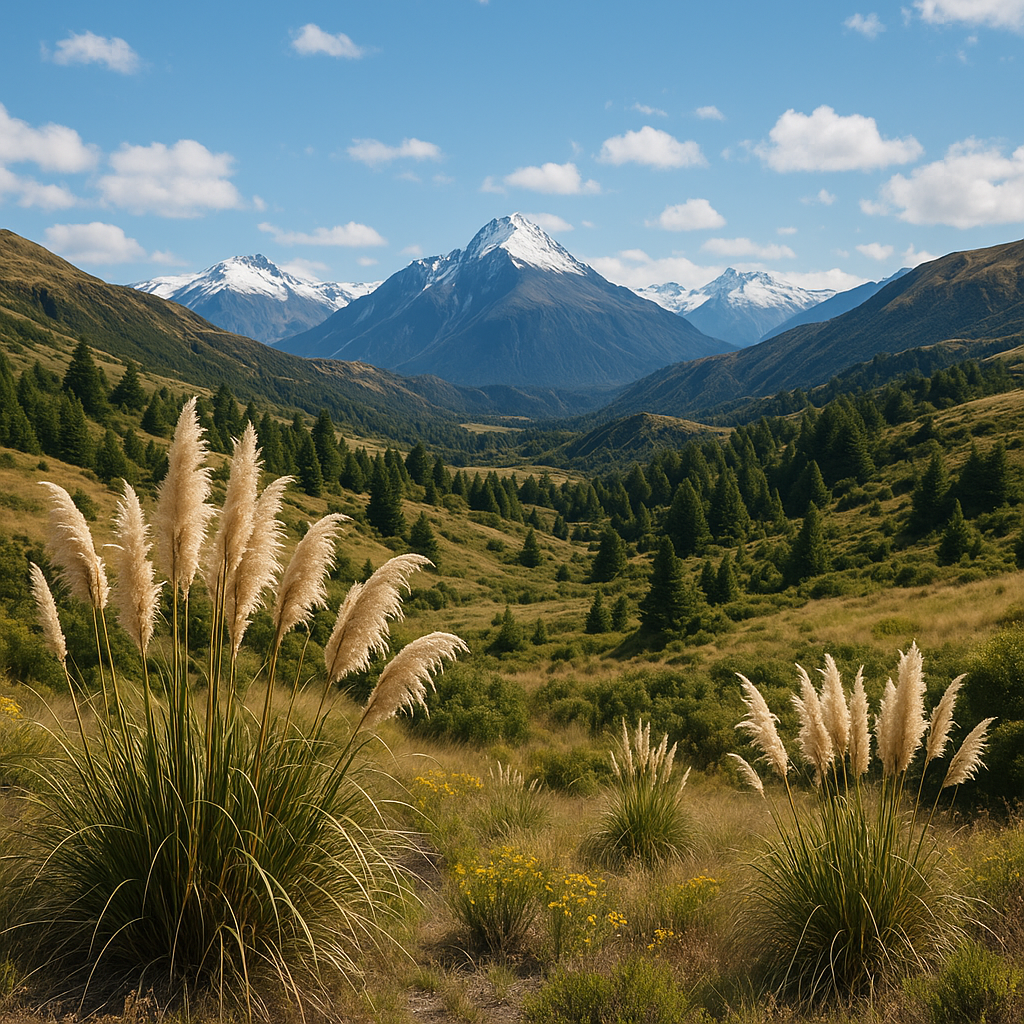$10M Investment Targets Invasive Weeds to Safeguard NZ Tourism and Landscapes
Conservation Minister Tama Potaka and Biosecurity Minister Andrew Hoggard jointly revealed the plan, emphasizing the critical intersection between biodiversity protection, rural livelihoods, and sustainable tourism.

- Country:
- New Zealand
In a strategic move to protect New Zealand’s natural landscapes, boost rural economies, and safeguard the country’s $3.4 billion conservation tourism sector, the Government has announced a $10 million investment over three years to eradicate invasive weeds across some of the nation’s most iconic and ecologically sensitive areas. Conservation Minister Tama Potaka and Biosecurity Minister Andrew Hoggard jointly revealed the plan, emphasizing the critical intersection between biodiversity protection, rural livelihoods, and sustainable tourism.
A Critical Threat to New Zealand’s Landscapes
Invasive weeds such as wilding pines, marram grass, spartina, and pampas grasses are rapidly altering native ecosystems, threatening biodiversity, farmland productivity, and even national icons like Aoraki/Mount Cook and Stewart Island (Rakiura). Wilding pines alone now cover nearly 2 million hectares and spread at a rate of approximately 5% per year, creating long-term ecological and economic risks.
“These invasive species can choke our native plants, alter soil chemistry, and fuel wildfires,” Minister Potaka warned. “Without timely intervention, the cost to our environment, tourism appeal, and agricultural productivity grows exponentially.”
Where the Action Will Happen
The new funding, sourced from the International Visitor Levy (IVL), will be deployed across multiple high-value conservation and tourism areas:
-
Abel Tasman National Park
-
Aoraki / Mount Cook National Park
-
Tongariro National Park
-
Stewart Island / Rakiura
-
Mackenzie Basin and Molesworth
-
Te Paki and North Cape / Otou near Cape Reinga
These are not only ecological hotspots but also key destinations for both domestic and international visitors. Keeping these locations pristine is vital for maintaining New Zealand’s competitive edge in nature-based tourism.
Specific Investments and Initiatives
-
$3 Million for Wilding Conifer Control The Molesworth and Mackenzie Basin—both significantly affected by wilding pines—will receive additional funding for control efforts under the National Wilding Conifer Control Programme, led by Biosecurity New Zealand. This builds on past IVL support in areas like Canterbury, Marlborough, Otago, and Rangitoto Island.
-
$7.45 Million for Management of Other Weeds Other aggressive weeds—such as marram grass (which destabilizes dunes), spartina (which degrades estuaries), and pampas grass (which overtakes native plant communities)—will be tackled in Rakiura, Abel Tasman, Te Paki, and the North Cape region. These efforts are vital to preserving the visual and ecological character of New Zealand’s coastal and dune environments.
-
Smart Technology for Early Detection A portion of the IVL funding will support the development and implementation of an innovative software tool designed to detect invasive species early. This AI-driven solution will use real-time data and remote sensing to identify new weed outbreaks before they become unmanageable—shifting the strategy from reactive to proactive.
Rural Economies and Tourism Aligned
Conservation Minister Potaka emphasized that tourism is central to New Zealand’s economic growth strategy. “This investment not only protects our natural assets but also supports jobs and rural businesses that depend on tourism. Clean, green landscapes are what bring people here—and what keep them coming back.”
Biosecurity Minister Hoggard added that the initiative reflects the Government’s broader commitment to protecting New Zealand’s rural heartland. “Invasive weeds threaten farmland, water catchments, and native biodiversity. That’s why we’ve committed $10 million annually in baseline funding and another $2 million through the recent Budget.”
Since 2016, more than $150 million has been invested in the fight against wilding pines, complemented by $33 million in contributions from regional councils, iwi, landowners, researchers, and community volunteers.
Community and Partnership Driven
The Ministers acknowledged the ongoing support and dedication of regional councils, iwi groups, DOC rangers, farmers, and conservation volunteers who are central to New Zealand’s biosecurity success. Their joint efforts have helped push back some of the most severe infestations and preserve the integrity of treasured public lands.
“This year’s investment reflects a national effort, not just a government programme,” Minister Hoggard said. “It’s about collective action to protect what makes New Zealand unique.”
Looking Forward
With climate change intensifying ecological threats and visitor numbers rebounding post-pandemic, the stakes have never been higher. This investment underscores the Government’s dual commitment to environmental protection and economic growth, ensuring New Zealand’s conservation jewels remain vibrant and accessible for generations to come.
ALSO READ
Sikkim Prioritizes AYUSH with Rich Medicinal Biodiversity
Biased AI models undercut inclusive biodiversity learning
New Spider Species Discovered in Sundarbans: A Testament to Biodiversity
Beneath the Glitter: Peru's Lost Biodiversity Amid Illegal Gold Rush
US Beef Set to Flood Australian Markets Amid Biosecurity Debate










